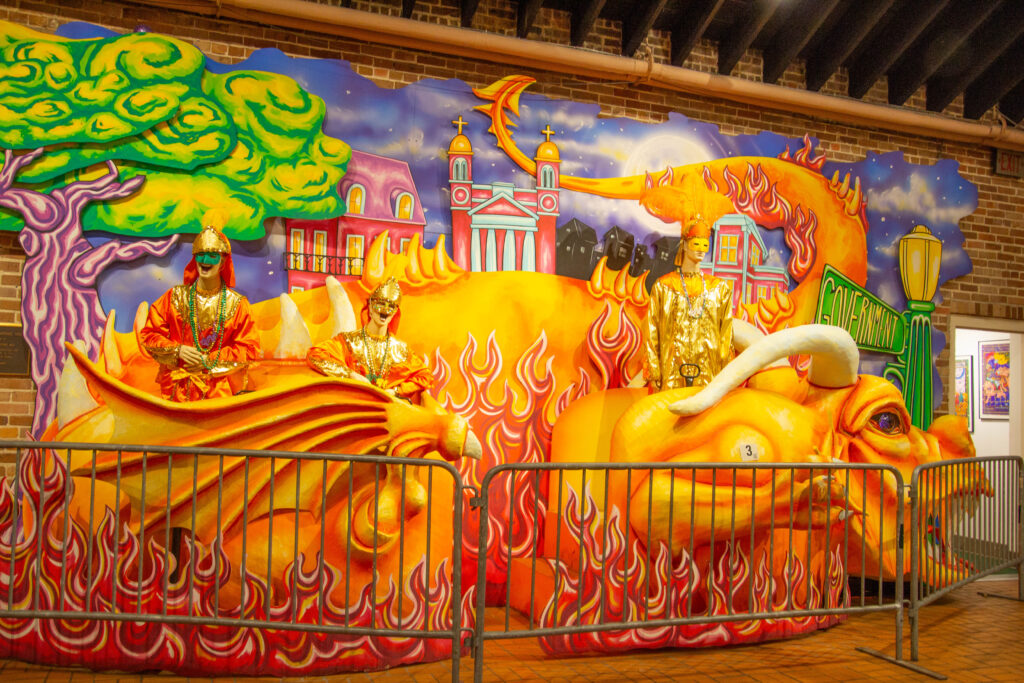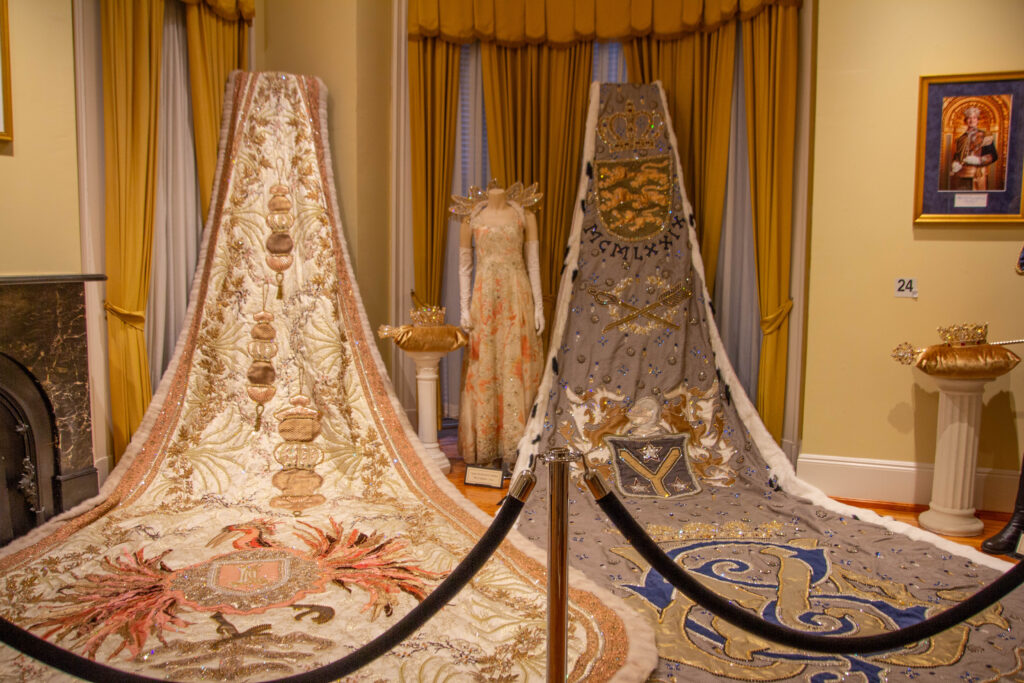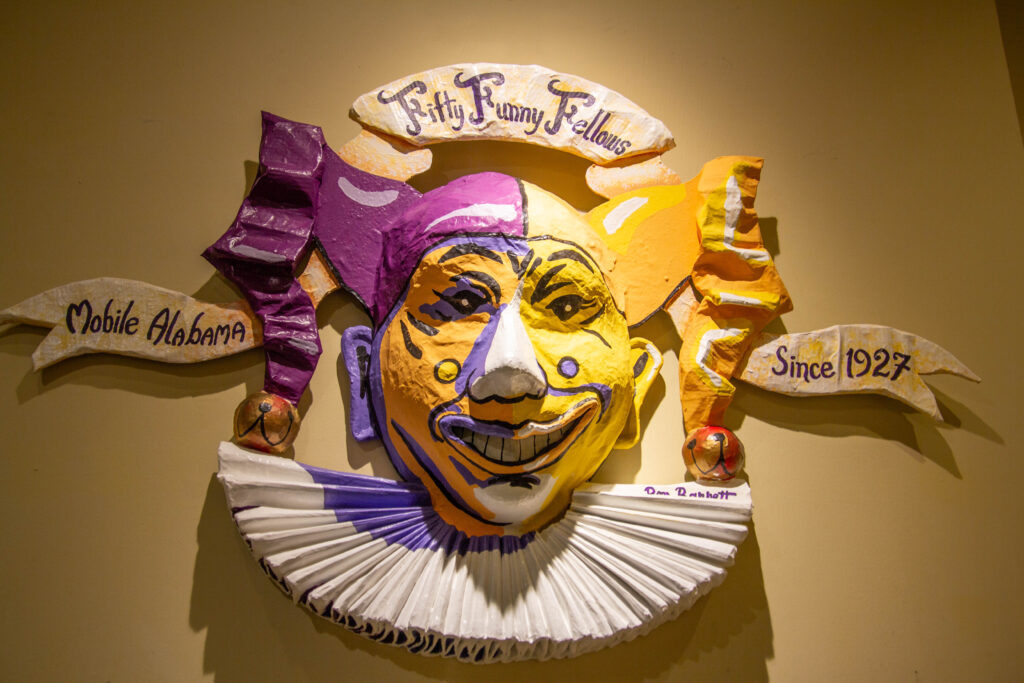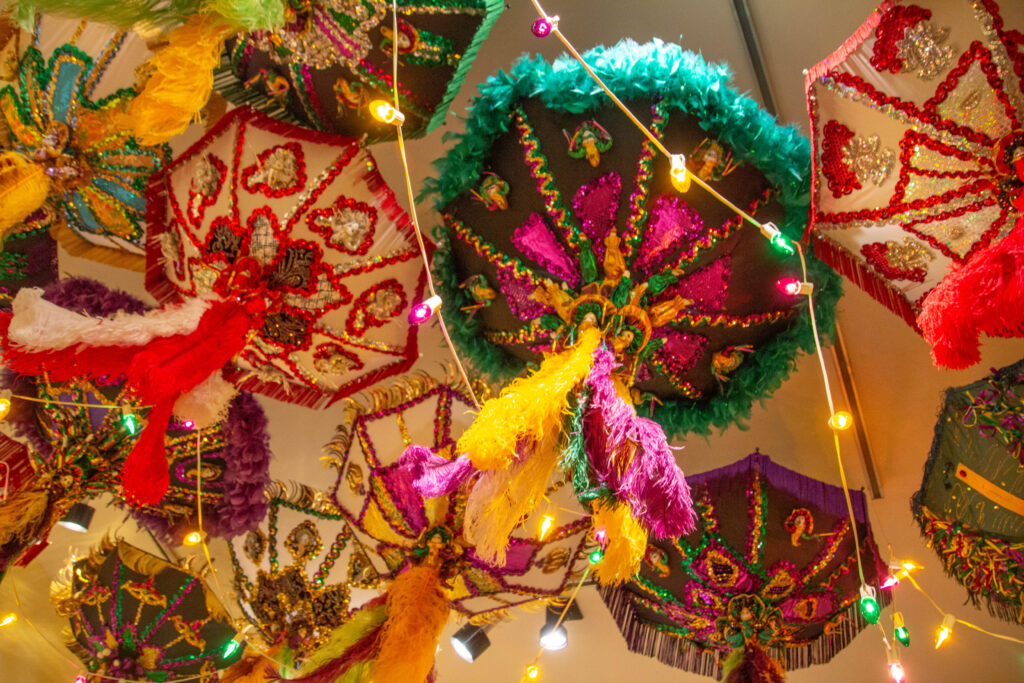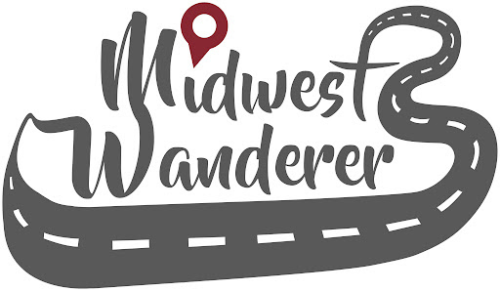When we spent a month along the Alabama Coastal Connection Scenic Byway, we purposely stayed near Mobile. We wanted to experience the family-friendly Mardi Gras there, since the city is the birthplace of Mardi Gras in the United States. So, we made the Mobile Carnival Museum one of the first stops during our visit.
Visitors may explore the museum on their own or take a guided tour, available at specific times during the day, at no extra cost. We opted for the guided tour. Since there were no other visitors for that tour time, we scored a private tour.
History of Mardi Gras
We began with an introductory video, where we learned the first Carnival observance took place in 1703 in the French settlement of Port San Louis, just north of Mobile.
What kinds of celebrations occurred between that first one and 1830 isn’t well documented, with control of the territory bouncing between France and Spain during these years before it became part of the United States.
Following the video, our docent filled us in on Mobile’s Mardi Gras history from 1830 until today. In 1830, a group of young men in Mobile celebrated New Year’s Eve in the tradition of the time. Steamboats tied up on the waterfront held open houses, and these men went boat to boat, partaking of the liquor the steamboat captains provided.
Once they had visited all of the steamboats, they were walking through downtown Mobile when they passed a hardware store that one of their family’s owned. They went into the store, borrowed shovels, hoes, and cowbells, and paraded through the city, making a lot of noise.
They had such a fun time doing that, they did it again the next year, and the next. It became a tradition. By 1837 the group, who named themselves the Cowbellion de Rakin Society, began throwing small gifts to the crowds during their “parades.” The Cowbellions were Mobile’s first mystic society. (In Louisiana and Mississippi, these groups call themselves “krewes” instead of “mystic societies.”)
More Mystic Societies Formed
The Cowbellions wouldn’t let any new members into their society, not even their sons. So, the younger men formed their own society, named the Strikers Independence Society. Unlike the Cowbellians, the Strikers did let new members in. The Strikers are still an active mystic society today. The Cowbellians died off as those original members passed away.
Over the years, many more mystic societies formed. Today there are more than 80.
Carnival Moves to Fat Tuesday
Carnival paused during the Civil War. Then, in 1868, a man named Joe Cain dressed as the fictional Chief Slacabamorinico and paraded through Mobile’s streets on Fat Tuesday. Mardi Gras has been celebrated on Fat Tuesday since then.
Celebrations are Weeks Long
Fat Tuesday isn’t the only day for celebrating, though. Mardi Gras season actually begins the first weekend following January 6, with thirty-five mystic societies holding parades during this period. The closer it gets to Fat Tuesday, the more parades there are, especially in the last two weeks of the season. On the weekend before Fat Tuesday, there are often five or six parades each day.
Joe Cain is Not Forgotten
One of those parades is called the Joe Cain Parade. Joe Cain is the man who revived Mobile’s Carnival celebration after the Civil War. It’s also known as the People’s Parade. Anyone can decorate a truck and participate.
More in the Mobile Carnival Museum
Having not much knowledge of Mardi Gras other than a lot of parades take place, our visit to the Mobile Carnival Museum enlightened us. Here are some highlights:
Mardi Gras Royalty
- There are two major Mardi Gras associations in Mobile: The Mobile Mardi Gras Association and the Mobile Area Mardi Gras Association. Both associations crown a king and a queen each year. The museum includes many of the “royalty” costumes, gowns, and trains. The kings and queens design their personalized trains. The handmade trains often include emblems signifying a king or queen’s hobby or other passion. Each takes about nine months to make. The extravagant trains on display—sparkling with glittery fabrics and bedazzled with jewels— wowed us.
- The Mobile Mardi Gras Association’s king is always named King Felix III. The Mobile Area Mardi Gras Association’s king is always named King Alexis. King Alexis arrives on Sunday and King Felix III on Lundi Gras (Fat Monday). They ride the king’s floats in parades on those days for the first time.
- The Mobile Mardi Gras Association queen holds an elegant luncheon for her court, her female family members and friends. Everyone dresses in style, including wearing hats. We happened to walk through the convention center while workers prepared for the luncheon. With the way they were bustling around, we could tell they were preparing for a huge event.
- Every year, a Navy ship docks at the port on Mardi Gras weekend, and a couple of the sailors act as a military escort for the queen. They walk beside her at the coronation when she is announced and help to carry and position her train, which usually weights about 35 pounds.
Mardi Gras Balls and Parades
- Almost all of the mystic societies hold balls. Most societies hold their balls during the Mardi Gras season, and that year’s king and queen make an appearance at each of them.
- One exception to the ball time frame is the Santa Claus Society, which holds their ball during the Christmas season. The members all dress as Santa Claus for the ball.
- One of the museum’s fourteen galleries focuses on parade floats. Each year, a Mardi Gras theme is chosen, and every parade float follows that theme. Myths are often theme subjects, but one year the theme was Jimmy Buffett, and the year we visited, it was “hidden ancestors,” which basically meant Mardi Gras history.
- Thirty-five of Mobile’s mystic societies hold parades during the Mardi Gras season. Right after Fat Tuesday, society members dismantle their parade floats and begin making floats for the next year’s parades.
- A firetruck always ends the parade. This practice stems from the days when paraders carried torches and other means to light up the floats for the evening parades. Because the paper maché floats could easily go up in flames, the fire department was always on hand for emergencies.
If You Visit the Mobile Carnival Museum
The Mobile Carnival Museum, located in downtown Mobile at 355 Government Street, offers complimentary parking next to the museum. Guided tours are at specific times, but you can take self-guided tours anytime during their open hours. Visit the museum’s website for guided tour hours, admission rates, and other information.
